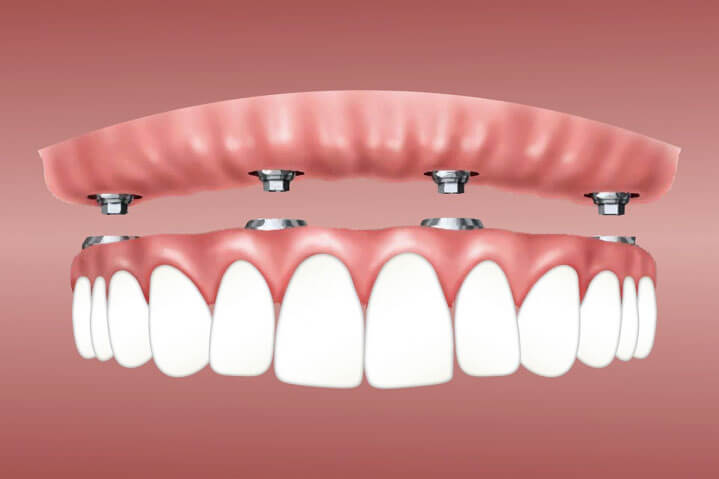
When a person loses a tooth, the shape of the teeth around it begin to deform and dissolve, leading to damage to the jaw bone. Loss of a tooth can also cause problems in chewing, which limits the kind of food that can be ingested, and can lead to malnutrition. Losing a tooth can also lead to problems in speaking and can affect the self-esteem of the person. And if all that wasn’t enough, losing a tooth or teeth also changes the way the teeth come together when a person bites or chews food, thus affecting the jaw joint (temporomandibular joint). A dental implant fixes all these problems by attaching a replacement for the lost tooth.
Source: https://pixabay.com/
A dental implant is a metal post fused to the jaw-bone through the gums that supports the artificial crown of the tooth as a replacement for the lost tooth. The metal post is first made to fuse with the jaw bone over a few months. This process is known as osseointegration. Generally, the most popular metal for manufacturing a dental implant is titanium, which fuses to the bone easily without causing any reactions. The replica of a crown made of porcelain or a dental bridge is then fixed upon the implant. It restores the structure of the teeth and improves the bite of the teeth.
The metal post, after being fixed into your jawbone with surgery, fuses with the bone in a few months. Fusing with the bone gives the implant a stronger hold. This prevents the artificial crown or tooth from slipping off when you’re chewing or speaking. A dental implant also supports other dental prosthetics such as a dental bridge in which the bridge is fixed to the implant to make sure the user cannot remove it on purpose or unintentionally. Another fixture that an implant supports is one that is supported over a denture, which can be removed from the abutment of the implant with some finger pressure.
Once you visit the dentist, he will take an x-ray or an impression of your lost tooth to determine the size of the implant and the artificial tooth. If your tooth has been partially broken, an extraction procedure is needed to remove the broken tooth. After the size and shape are confirmed, the dentist begins the bone grafting procedure to make space for the implant. The overlaying gum tissues are removed to expose the bone. The bone is then drilled with special drills for dentistry procedures. A cool water spray is used to keep the temperatures controlled so that the bone doesn’t get damaged by the heat from drilling. After the plug for the implant is created, the dentist either fixes the implant immediately or gives the bone 2-3 weeks to heal, after which the implant is added. You can choose what you want. The artificial crown is then fixed on the implant using an abutment.
If you’re thinking of pain, don’t worry because the dentist will apply local anesthesia to numb down the bone and gums. There are still some risks for certain patients that you must know about. A patient with diabetes can have a complication with the procedure as their wounds heal slower than others. Patients with leukemia also need to talk to their doctors about this procedures their wounds take too long to heal and they risk rapid bleeding.